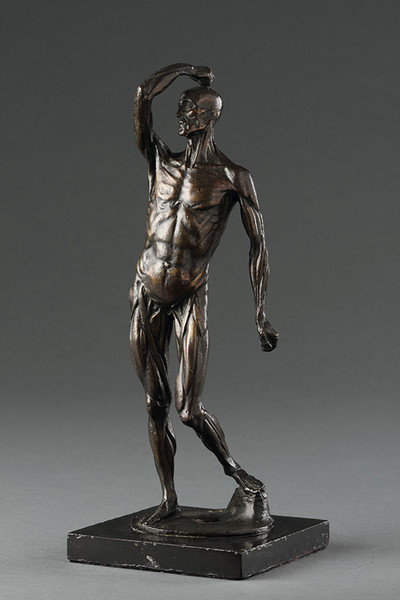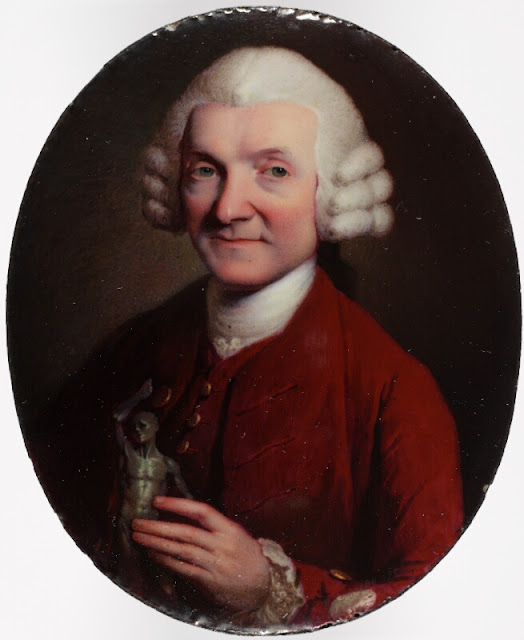Michael Henry Spang at Kedleston, Derbyshire.
In 1759 Spang made chimneypieces for three parade rooms, the Music Room (With central relief of ‘Singing at a Greek Wedding’), Drawing Room (With two caryatids and a relief of ‘Virtue rewarded by Riches and Honour’), and Dining Rooms (With caryatid figures of ‘Ceres and Bacchus’ and relief of ‘An Ancient Repast’) at Kedleston, at a total cost of £990.
He drew a design for a painted ceiling in the drawing room, celebrating naval victories over the French, but this did not come to fruition since Adam favoured a more neo classical approach .
In 1759 he also procured a model of a ship for Lord Scarsdale.
Drawing by Spang for the proposed ceiling at Kedleston.
Alternative Designs by Robert Adam for the Caryatid Chimneypieces at Kedleston
Soane Museum
In 1760 he carved the dolphins and prows of ships on the stone screen of the Whitehall entrance to the Admiralty, and in the same year executed three statues for the front of Spencer House, London.
Spang was on the list of artists who met at the Foundling Hospital in 1760 together with William Tyler, Joseph Wilton, Richard Hayward and Roubiliac.
_______________________________________
A Companion to the Muses?
Erato/Melpomene/Thalia (?) with a Lyre and Masks (The
Muse of Lyric and Love Poetry or Muse of Tragedy or the Muse of Comedy and
Pastoral Poetry.
A Warrior/ Soldier
A Group of Four Carved Wooden Figure by Spang at Kedleston, Derbyshire.
Each 100cms tall.
c. 1758.
Drawing by Spang at Kedleston
After an Etching of the original painting by Francesco Furini (1600 - 46) of 1728, a version now in the Kunsthistorisches Museum in Vienna: from a portfolio of reproductions of the Electoral Gallery of Paintings (below).
Sigismunda
mourning over the Heart of Guiscardo illustrates
a scene from the first tale on day four of The Decameron, a medieval collection of short stories (novelle) by Italian author
and poet, Giovanni Boccaccio
_________________________
Birmingham Museum and Art Gallery.
Before it came to Birmingham, this version of Sigismunda was in the collection
of the Duke of Newcastle, and prior to that to Sir Thomas
Sebright. Sebright bought the painting at auction in 1758, believing it to be by Correggio.
Sebright bought the painting for the then enormous sum of £404.5s.
Hogarth intended a picture to outrank
the Old Masters, which he felt were unjustly preferred by English connoisseurs to works by
contemporary British artists. He completed his
own painting of Sigismunda, and asked the same price that the Sebright painting
had sold for. Hogarth was not
entirely successful in this endeavour he received a great deal criticism.
29 on a
Newcastle inventory. A similar work was in Paul Ganz collection and was sold
Christie's, New York, 3 June 1987, lot 106. It was then sold at Sotheby's, 21
May 1998, lot 155 as Ghismonda,
and again by Sotheby's on 14 October 1998 as Furini, Ghismonda, lot 48a (71.8 x 59.7 cms).
__________________________________
I include here for good measure the painting of Sigismunda by William Hogarth of 1759.
Showing the obvious influence of the Furini painting - most likely from a copy of the etching above
















































